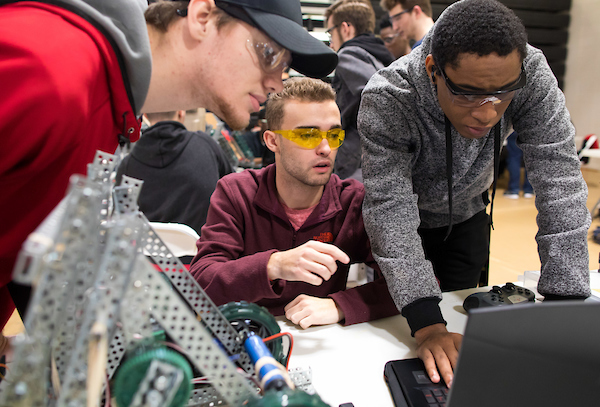Mechatronics Engineering
Learn More About Mechatronics Engineering
Admission Requirements
This program does not have specific admission requirements. Only admission to Kennesaw State University is required to declare this major.
General Education Core IMPACTS Curriculum Recommendations for this Major
M: Students should take MATH 1190 or higher.
T: Students should take MATH 2202 or higher.
T: Students should take PHYS 2211/L and PHYS 2212/L.
Related Minors or Certificates Available
- Aerospace Engineering Minor
- Biomedical Engineering Minor
- Energy/HVAC Minor
- Mechatronics Engineering Minor
- Nuclear Engineering Minor
- Renewable Energy Engineering Minor
- Robotics Programming Certificate
Sample Classes
-
MTRE 3720: Introduction to PLCs and Microcontrollers
This course covers semiconductor electronics as the basic foundation. Further topics covered are Industry, automation, control, a basic sensing scheme, the PLC software environment, and the creation of RLL diagrams. Additionally, detailed communication protocols and interfaces with the AVR microcontroller will be carried out.
-
MTRE 3810: Device Control and Simulation of Mobile Robots
This course covers the Robot operating systems (ROS) from basic to advance level to program and build robots in the simulation world, learn algorithmic approaches, mathematical models, and computational and motion control methods applicable to mobile robotic systems. Students will also learn different motion planning and navigation schemes associated with wheeled mobile robots. Finally, students will recognize and analyze the basic mechanical and electrical systems concerning robots’ locomotion.
-
MTRE 4710: Instruments and Controls
Characteristics of instruments used in mechanical systems for determining parameters such as temperature, pressure, and flow are studied. The use of these devices in automated systems is covered. Furthermore, the elements of control theory, selection of control modes, and application to mechanical systems are studied. Exercises illustrating the use of pertinent instrumentation for determining the performance of mechanical equipment are conducted.
-
MTRE 4810: Robotics Analysis and Synthesis
This course introduces the basic principles of robotic manipulators. Students will learn how to derive mathematical models, plan trajectories, and design controllers for robot applications. Software tools, such as MATLAB, are employed to analyze and simulate the robot system.












